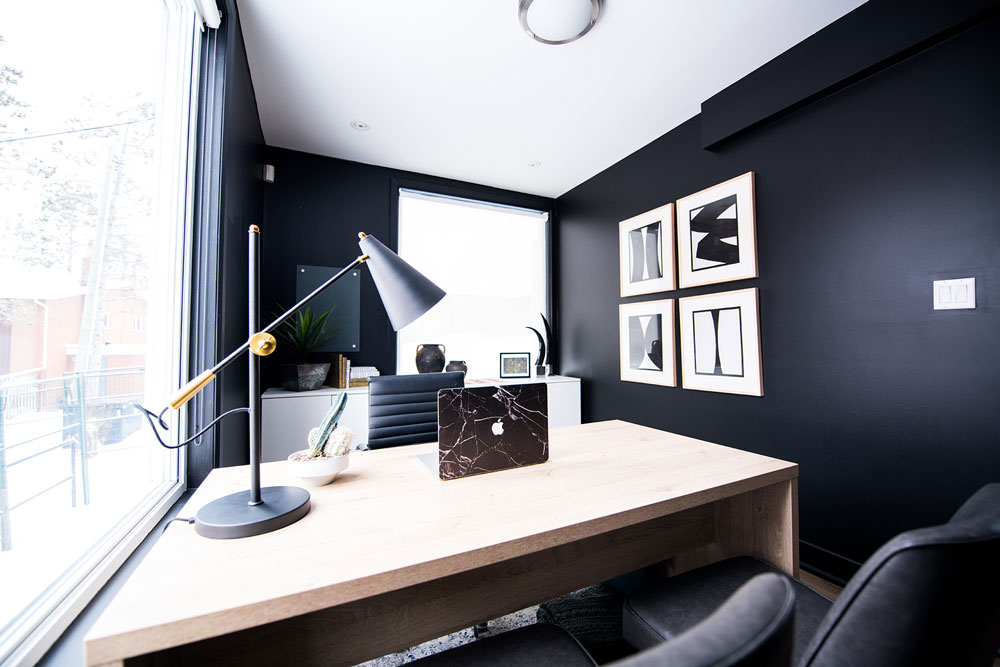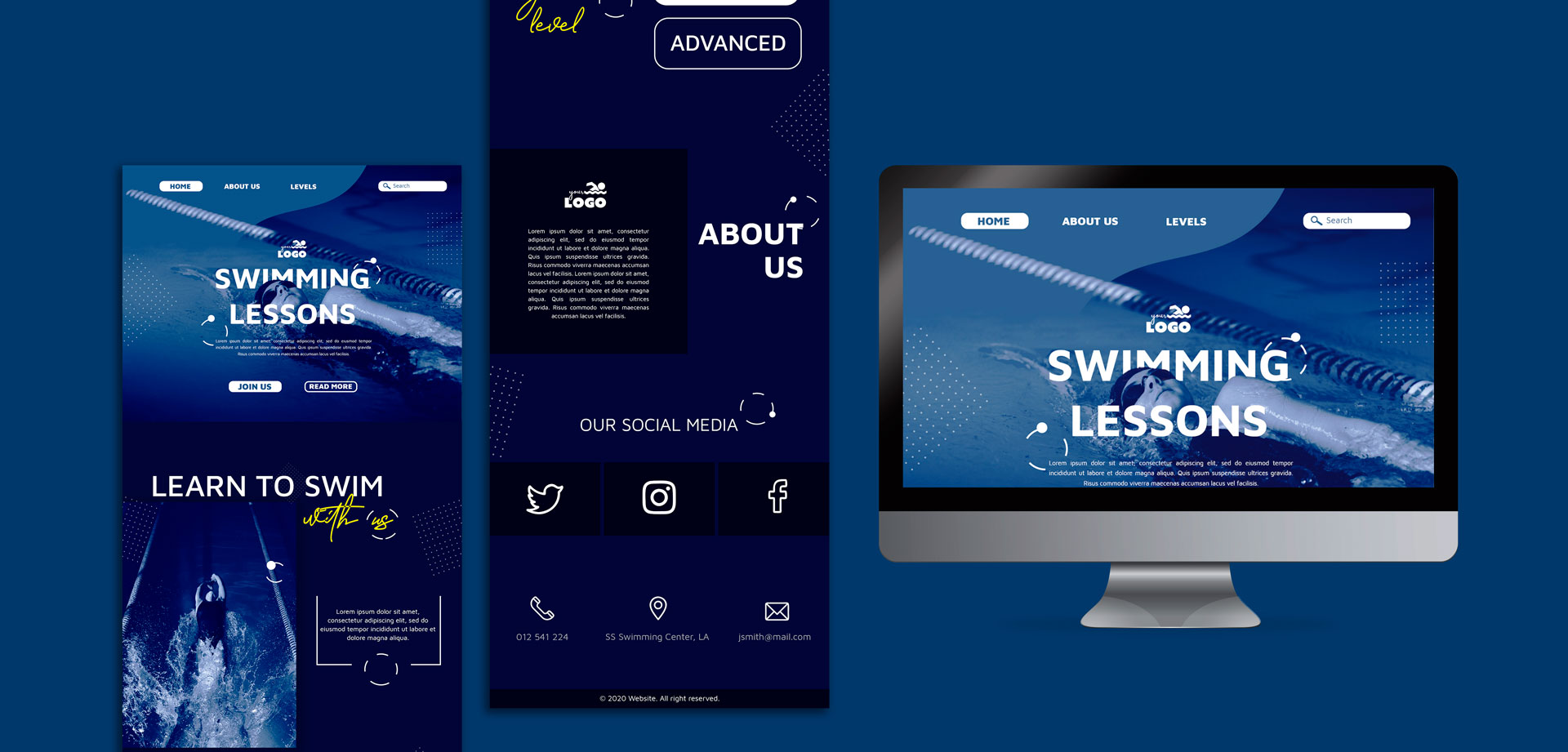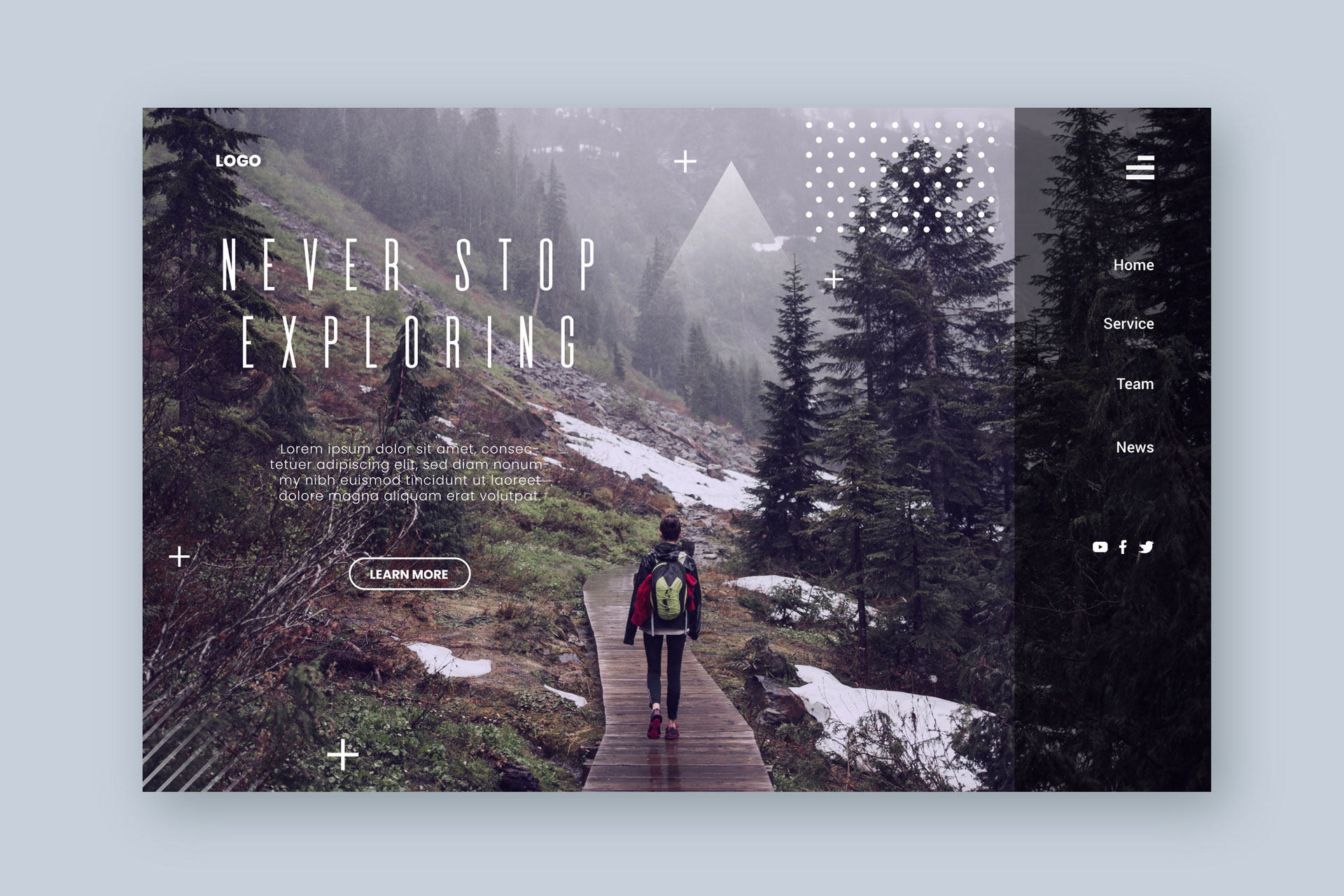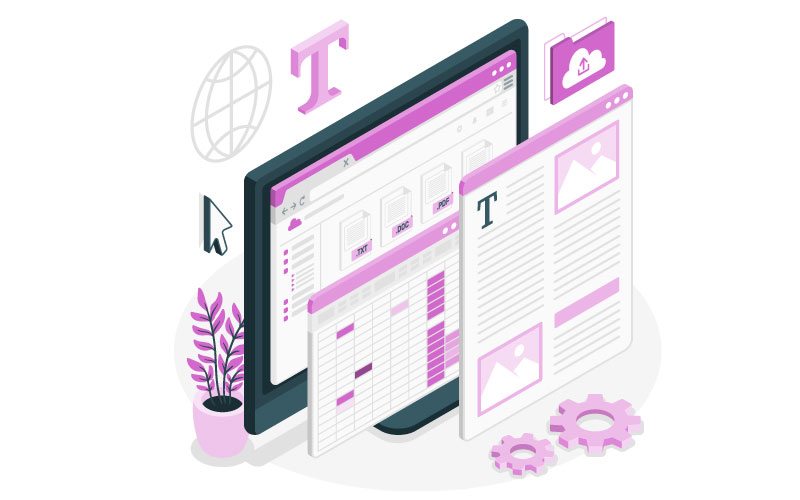In today's digital age, having a strong online presence is crucial for businesses looking to unlock success. And at the core of that online presence is a custom website design that not only captures your brand's essence but also engages and converts visitors into loyal customers. A well-designed website has the power to make a lasting impression, build credibility, and drive growth for your business. But with countless options and trends constantly evolving, it can be overwhelming to navigate the world of website design. That's why this guide is here to help. In this comprehensive guide, we will explore the key elements of custom website design, from understanding your target audience to creating a compelling user experience. Whether you're a small business owner or an established company looking to revamp your website, this guide will provide you with the insights and strategies you need to take your online presence to the next level and unlock the success you've been striving for. So, let's dive in and discover the transformative power of custom website design.

Benefits of a Custom Web Design
Investing in a custom website design offers numerous benefits that can significantly impact your business's success. Let's explore some of these benefits in more detail:
- Enhanced User Experience: A custom website design allows you to create a seamless and intuitive user experience (UX) for your visitors. By understanding your audience's needs and behavior, you can design a website that is easy to navigate, visually appealing, and engaging. A positive user experience not only keeps visitors on your site longer but also increases the chances of conversions and customer retention.
- Improved Branding and Credibility: A custom website design enables you to incorporate your brand's visual elements, such as colors, fonts, and logos, consistently throughout your website. This creates a cohesive and professional look that builds trust and credibility with your audience. A well-designed website also allows you to communicate your brand's story and values effectively, further strengthening your brand's identity.
- Better Search Engine Optimization (SEO): Custom website designs are built with SEO best practices in mind. This means that your website will have a solid foundation for search engine visibility, allowing you to rank higher in search engine results pages (SERPs). A higher ranking leads to increased organic traffic, more visibility, and ultimately, more opportunities for conversions.
- Increased Conversion Rates: A custom website design takes into account the customer journey and incorporates persuasive elements to encourage conversions. From strategically placed call-to-action buttons to optimized landing pages, a well-designed website guides visitors towards taking the desired action, be it making a purchase, submitting a form, or signing up for a newsletter.
- Scalability and Flexibility: As your business grows, your website needs to evolve and adapt to new requirements. A custom website design allows for scalability and flexibility, making it easier to add new features, integrate third-party tools, and accommodate future updates. This ensures that your website remains relevant and effective in meeting your business's changing needs.
In conclusion, investing in a custom website design offers a range of benefits, including enhanced user experience, improved branding and credibility, better SEO, increased conversion rates, and scalability. These benefits contribute to unlocking success for your business in the digital age.
Factors to Consider When Designing a Custom Website
Designing a custom website requires careful consideration of various factors to ensure the best possible outcome. Let's explore some of the key factors you should keep in mind when embarking on the website design process:
- Define Your Goals: Before diving into the design phase, it's crucial to clearly define your goals and objectives for your website. Ask yourself what you want to achieve with your website, whether it's generating leads, driving sales, or increasing brand awareness. This will help guide the design decisions and ensure that your website aligns with your business goals.
- Know Your Target Audience: Understanding your target audience is essential for designing a website that resonates with them. Conduct market research to gather insights about your audience's demographics, preferences, and behavior. This information will shape the design elements, content, and functionalities of your website, making it more appealing and relevant to your target audience.
- Create a Clear and Intuitive Navigation: A well-designed website should have a clear and intuitive navigation structure that allows visitors to find the information they need easily. Consider organizing your website into logical categories and subcategories, and use descriptive labels for your navigation menu. Additionally, ensure that your navigation is consistent across all pages and accessible from any part of the website.
- Optimize Website Speed and Performance: Website speed is a crucial factor in providing a positive user experience. Slow-loading websites not only frustrate visitors but also have a negative impact on SEO. Optimize your website's speed by compressing images, minifying code, and leveraging caching techniques. Regularly monitor and optimize your website's performance to ensure it loads quickly and efficiently.
- Choose the Right Color Palette and Typography: The color palette and typography you choose for your website play a significant role in evoking emotions, establishing brand identity, and enhancing readability. Select colors that align with your brand's personality and consider their psychological impact on your target audience. Similarly, choose fonts that are legible and reflect your brand's tone and style.
- Prioritize Mobile Responsiveness: With the majority of internet users accessing websites on mobile devices, it's crucial to prioritize mobile responsiveness in your custom website design. Ensure that your website is optimized for different screen sizes and devices, providing a seamless user experience across desktop, tablet, and mobile. Test your website on various devices and browsers to ensure it displays correctly and functions smoothly.
By considering these factors during the website design process, you can create a custom website that is aligned with your goals, appeals to your target audience, and provides an exceptional user experience.
Understanding User Experience (UX) in Custom Website Design
User experience (UX) is a critical aspect of custom website design. It focuses on understanding and addressing the needs, expectations, and behaviors of website visitors to create a positive and satisfying experience. A well-designed UX can significantly impact the success of your website and ultimately, your business. Here are some key principles to keep in mind when designing for user experience:
- Simplicity: A simple and clutter-free design allows visitors to focus on the content and key elements of your website. Avoid overwhelming users with excessive information, complex layouts, or unnecessary features. Keep your design clean, intuitive, and easy to navigate.
- Clear Communication: Effective communication is essential for a positive user experience. Use concise and straightforward language to convey your message and guide users through your website. Ensure that important information and calls-to-action are easily noticeable and understandable.
- Consistency: Consistency in design elements, such as colors, fonts, and layouts, promotes familiarity and reduces cognitive load for users. Use consistent branding across your website to reinforce your brand's identity and create a cohesive user experience.
- Accessibility: Accessibility should be a priority when designing a custom website. Ensure that your website is accessible to users with disabilities by following accessibility guidelines, such as providing alternative text for images, using proper heading structure, and ensuring keyboard navigation functionality.
- Visual Hierarchy: Establish a clear visual hierarchy to guide users' attention and prioritize important elements. Use size, color, contrast, and placement to create a visually appealing and well-organized layout. Highlight key information and calls-to-action to make them stand out.
- User Testing and Feedback: Regularly conduct user testing and gather feedback to identify areas for improvement. User testing allows you to understand how users interact with your website and uncover any usability issues. Collect feedback from users to gain insights into their needs and preferences, enabling you to refine your website design accordingly.
By incorporating these principles into your custom website design, you can create a seamless and intuitive user experience that delights your visitors and drives business success.
Mobile Responsiveness and Its Impact on Custom Website Design
In today's mobile-dominated world, ensuring that your custom website design is mobile responsive is no longer optional—it's essential. Mobile responsiveness refers to the ability of a website to adapt and display correctly on various screen sizes and devices, providing an optimal user experience. Here's why mobile responsiveness matters and how it impacts your custom website design:
- Mobile Usage and Traffic: Mobile usage has surpassed desktop usage, with a significant portion of internet traffic coming from mobile devices. Ignoring mobile responsiveness means potentially alienating a large portion of your audience and missing out on valuable opportunities for engagement and conversions.
- Google's Mobile-First Indexing: Google now prioritizes mobile-friendly websites in its search engine rankings. If your website is not mobile responsive, it may rank lower in search engine results pages (SERPs), resulting in decreased visibility and organic traffic.
- User Experience and Engagement: Mobile users have different needs and behaviors compared to desktop users. They expect fast-loading, easy-to-navigate websites that provide a seamless user experience. By prioritizing mobile responsiveness, you ensure that your website meets these expectations, keeping visitors engaged and more likely to convert.
To achieve mobile responsiveness in your custom website design, consider the following best practices:
- Responsive Web Design: Implement a responsive web design framework that automatically adjusts the layout and content of your website based on the device it is being viewed on. This ensures that your website looks great and functions properly across various screen sizes.
- Mobile-First Design Approach: Adopt a mobile-first design approach, where you prioritize the design and functionality of your website for mobile devices and then scale up for larger screens. This approach ensures that your website is optimized for the mobile user experience from the start.
- Optimize Page Speed: Mobile users are often on the go and have limited patience for slow-loading websites. Optimize your website's performance by compressing images, minifying code, and leveraging caching techniques. This improves page load times and provides a smoother browsing experience.
- Thumb-Friendly Navigation: Design your website's navigation with mobile users in mind. Use large, easily tappable buttons and ensure that menus and links are positioned within reach of the user's thumb. This makes it easier for mobile users to navigate your website with one hand.
By prioritizing mobile responsiveness in your custom website design, you ensure that your website is accessible, engaging, and user-friendly across all devices. This leads to increased mobile traffic, improved search engine rankings, and higher conversion rates.
SEO-Friendly Custom Website Design Techniques
Search engine optimization (SEO) is crucial for driving organic traffic to your website and increasing its visibility in search engine results pages (SERPs). A well-designed custom website should incorporate SEO-friendly techniques to ensure that it ranks higher and attracts more targeted visitors. Here are some SEO-friendly custom website design techniques to consider:
- Keyword Research and On-Page Optimization: Conduct thorough keyword research to identify the terms and phrases your target audience is using to search for products or services related to your business. Incorporate these keywords strategically into your website's content, meta tags, headings, and URLs to optimize your website for search engines.
- Optimized URL Structure: Use descriptive and keyword-rich URLs that accurately reflect the content of each page. Avoid using generic or randomly generated URLs and instead create URLs that are concise, meaningful, and easy to read.
- Fast Page Load Times: Page load speed is a critical factor in SEO and user experience. Optimize your website's performance to ensure fast loading times by compressing images, minifying code, and leveraging caching techniques. Regularly monitor and optimize your website's speed to maintain a high-ranking position in SERPs.
- Mobile-Friendliness: As mentioned earlier, mobile-friendliness is now a crucial ranking factor in Google's search algorithm. Ensure that your custom website design is mobile responsive and provides a smooth user experience across different devices. Test your website on various mobile devices and ensure that it displays correctly and functions seamlessly.
- Structured Data Markup: Implement structured data markup, such as Schema.org, to provide search engines with additional context and information about your website's content. This can enhance your website's visibility in search results by enabling rich snippets and other search engine features.
- Optimized Images and Alt Tags: Optimize your website's images by using appropriate file formats, compressing file sizes, and adding descriptive alt tags. Alt tags not only improve accessibility but also provide search engines with context about the images, potentially improving your website's visibility in image search results.
- Internal Linking: Incorporate internal links throughout your website to improve navigation, enhance user experience, and help search engines discover and index your content. Internal linking allows search engines to understand the structure of your website and the relationships between different pages, improving your website's overall visibility.
By implementing these SEO-friendly custom website design techniques, you can enhance your website's visibility in search engine rankings, drive more organic traffic, and ultimately, increase your chances of converting visitors into loyal customers.
Incorporating Branding and Visual Elements in Custom Website Design
A custom website design provides an opportunity to showcase your brand's personality, values, and unique identity. Incorporating branding and visual elements into your website design helps establish a strong and memorable brand presence. Here are some key considerations when incorporating branding and visual elements into your custom website design:
- Consistent Branding: Ensure that your website design aligns with your overall brand identity. Use consistent branding elements, such as colors, fonts, and logos, across your website to create a cohesive and recognizable brand experience. Consistency in branding builds trust and credibility with your audience.
- Visual Storytelling: Leverage visual elements, such as images, videos, and infographics, to tell your brand's story and communicate your value proposition effectively. Use high-quality visuals that align with your brand's tone and style to create an emotional connection with your audience.
- Brand Messaging: Craft compelling and persuasive copy that reflects your brand's voice and resonates with your target audience. Use clear and concise language to communicate your brand's unique selling points and benefits. Ensure that your messaging is consistent throughout your website and aligns with your overall brand strategy.
- Intuitive User Interface Design: Design an intuitive user interface that guides visitors through your website effortlessly. Use visual cues, such as buttons, icons, and menus, to make navigation clear.
Do you want
more traffic?
Book a free 30-minute session to see how we can transform your online presence & grow your brand.








